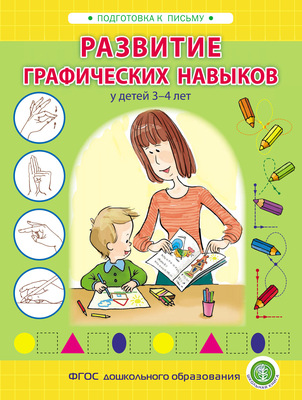Read the book: «German Unlocked. Your Complete Guide to B2 Proficiency»
Дизайнер обложки https://stabledifffusion.com
Illustrator https://stabledifffusion.com
© Аlexander Chekhanovski, 2025
© https://stabledifffusion.com, illustrations, 2025
ISBN 978-5-0065-6882-2
Created with Ridero smart publishing system
Chapter 1: Hallo! Introduction to German
Willkommen!
Welcome! Learning a new language can feel like a big adventure, and we’re so excited you’re embarking on this journey with us! German might seem a little intimidating at first, with its long words and different sounds, but don’t worry! This book is designed to make learning German fun and accessible, step-by-step. We’ll break down the basics, explore fascinating aspects of German culture, and equip you with the tools you need to start speaking confidently. So grab your favorite beverage, settle in, and let’s begin!

Why Learn German?
German is spoken by over 100 million people worldwide, primarily in Germany, Austria, Switzerland, and parts of other European countries. It’s a major language in Europe and the world of business, science, and the arts. Here are just a few reasons why learning German can be a fantastic investment:
Career Opportunities: Germany has one of the world’s largest economies, and many international companies are actively seeking German speakers.
Academic Pursuits: Germany is renowned for its universities and research institutions, offering excellent opportunities for higher education.
Cultural Enrichment: Immerse yourself in the rich history, literature, music, and art of the German-speaking world.
Travel and Exploration: Discover the beauty of Germany, Austria, and Switzerland, and connect with locals on a deeper level.
Cognitive Benefits: Learning a new language enhances your memory, problem-solving skills, and overall cognitive function.
The German Language Family
German belongs to the Germanic language family, which also includes English, Dutch, Swedish, and Norwegian. This means that you’ll likely find some similarities between German and English, making the learning process a bit easier. However, there are also key differences that we’ll address throughout this book.
Let’s Get Started: Basic Greetings
One of the first things you’ll want to learn are some basic greetings. Here are a few essential phrases:
Hallo! (hah-loh) – Hello! (General greeting, can be used anytime)
Guten Morgen! (goo-ten mor-gen) – Good morning! (Used until about 11 am)
Guten Tag! (goo-ten tahk) – Good day! (Used from late morning to evening)
Guten Abend! (goo-ten ah-bent) – Good evening! (Used from evening until bedtime)
Gute Nacht! (goo-te nahht) – Good night! (Used when going to bed)
Asking How Someone Is
To be polite, it’s good to ask how someone is doing. Here are a couple of ways to ask, depending on whether you’re speaking formally or informally:
Wie geht es Ihnen? (vee gayt es ee-nen) – How are you? (Formal – Use with people you don’t know well, older people, or in professional settings)
Wie geht es dir? (vee gayt es deer) – How are you? (Informal – Use with friends, family, and people you know well)
Here are a few ways to respond:
Mir geht es gut. (meer gayt es goot) – I’m fine.
Nicht so gut. (niht zo goot) – Not so good.
Es geht. (es gayt) – It’s okay. (So-so)
Introducing Yourself
Here’s how to ask someone their name and introduce yourself:
Wie heißen Sie? (vee hai-sen zee) – What’s your name? (Formal)
Wie heißt du? (vee haist doo) – What’s your name? (Informal)
Ich heiße… (ihh hai-se…) – My name is…
And here’s how to express pleasure upon meeting someone:
Freut mich, Sie kennenzulernen! (froit mihh, zee ke-nen-tsoo-ler-nen) – Pleased to meet you! (Formal)
Freut mich, dich kennenzulernen! (froit mihh, dihh ke-nen-tsoo-ler-nen) – Pleased to meet you! (Informal)
Saying Goodbye
Here are some ways to say goodbye:
Auf Wiedersehen! (auf vee-der-zay-en) – Goodbye! (Formal)
Tschüss! (chüs) – Bye! (Informal)
Bis bald! (bis bahlt) – See you soon!
Pronunciation Basics
German pronunciation can be tricky, but with practice, you’ll get the hang of it. Here are a few key points to keep in mind:
Vowels:
a: Similar to the “a” in “father”
e: Similar to the “e” in “bed”
i: Similar to the “ee” in “see”
o: Similar to the “o” in “go”
u: Similar to the “oo” in “moon”
ä: Similar to the “a” in “cat” (but a bit more open)
ö: A sound that doesn’t exist in English; try saying “ay” while rounding your lips.
ü: A sound that doesn’t exist in English; try saying “ee” while rounding your lips.
Consonants:
ch: Can be pronounced in two ways:
After “a,” “o,” “u,” or “au,” it sounds like the “ch” in “Bach” (a guttural sound).
After “i,” “e,” “ä,” “ö,” “ü,” or consonants, it sounds like the “h” in “hue.”
sch: Sounds like the “sh” in “shoe.”
ß: Sounds like a double “s” (ss).
r: Often pronounced in the back of the throat (similar to the French “r”).
Tips for Mastering Tricky Sounds
Listen carefully: Pay attention to how native speakers pronounce words. There are many resources online where you can hear German pronunciation.
Practice regularly: The more you practice, the easier it will become to pronounce German sounds correctly.
Don’t be afraid to make mistakes: Everyone makes mistakes when learning a new language. The important thing is to keep trying!
Cultural Note: Sie vs. du
One of the first things that might strike you about German is the distinction between formal and informal “you” (Sie vs. du). It’s important to use the correct form to avoid offending someone.
Sie (Formal): Use with people you don’t know well, older people, people in positions of authority (e.g., your boss, a doctor), and in formal settings.
du (Informal): Use with friends, family, people your own age, and people who have specifically told you to use “du.”
When in doubt, it’s always better to err on the side of formality and use “Sie.”
Word Bank
Hallo (hah-loh) – Hello
Guten Morgen (goo-ten mor-gen) – Good morning
Guten Tag (goo-ten tahk) – Good day
Guten Abend (goo-ten ah-bent) – Good evening
Gute Nacht (goo-te nahht) – Good night
Wie geht es Ihnen? (vee gayt es ee-nen) – How are you? (Formal)
Wie geht es dir? (vee gayt es deer) – How are you? (Informal)
Mir geht es gut (meer gayt es goot) – I’m fine
Nicht so gut (niht zo goot) – Not so good
Es geht (es gayt) – It’s okay
Wie heißen Sie? (vee hai-sen zee) – What’s your name? (Formal)
Wie heißt du? (vee haist doo) – What’s your name? (Informal)
Ich heiße… (ihh hai-se…) – My name is…
Freut mich, Sie kennenzulernen! (froit mihh, zee ke-nen-tsoo-ler-nen) – Pleased to meet you! (Formal)
Freut mich, dich kennenzulernen! (froit mihh, dihh ke-nen-tsoo-ler-nen) – Pleased to meet you! (Informal)
Auf Wiedersehen! (auf vee-der-zay-en) – Goodbye! (Formal)
Tschüss! (chüs) – Bye! (Informal)
Bis bald! (bis bahlt) – See you soon!
Exercises
How would you greet a friend in the morning?
How would you greet your professor in the afternoon?
How would you ask someone their name in a formal situation?
Practice pronouncing the following words: Hallo, Guten Tag, Tschüss.
Imagine you are meeting a new colleague at work. Write a short dialogue where you greet them, ask how they are, and introduce yourself.
That’s the end of Chapter 1! We’ve covered some essential greetings and introductions, along with a basic overview of German pronunciation and the formal/informal.
Chapter 2: Numbers, Colors, and Days of the Week
In this chapter, we’ll learn how to count, identify colors, and talk about the days of the week and months of the year. These are essential building blocks for everyday conversations.
Counting from 1 to 20
Let’s start with the numbers 1—20. Learning these will make it easier to understand prices, tell the time, and more!
1 – eins (ains)
2 – zwei (tsvai)
3 – drei (drai)
4 – vier (feer)
5 – fünf (fünf)
6 – sechs (zeks)
7 – sieben (zee-ben)
8 – acht (ahht)
9 – neun (noin)
10 – zehn (tsayn)
11 – elf (elf)
12 – zwölf (tsvölf)
13 – dreizehn (drai-tsayn)
14 – vierzehn (feer-tsayn)
15 – fünfzehn (fünf-tsayn)
16 – sechzehn (zehks-tsayn)
17 – siebzehn (zee-b-tsayn)
18 – achtzehn (ahht-tsayn)
19 – neunzehn (noin-tsayn)
20 – zwanzig (tsvan-tsih)
Tips for Remembering Numbers:
Look for patterns: Notice how numbers 13—19 are formed by adding “-zehn” to the base number (with a few slight spelling changes).
Practice regularly: Recite the numbers aloud until you can say them easily.
Use them in context: Count objects around you, practice saying phone numbers, or play number-based games.
Counting by Tens to 100
Now let’s learn the multiples of ten:
20 – zwanzig (tsvan-tsih)
30 – dreißig (drai-sih)
40 – vierzig (feer-tsih)
50 – fünfzig (fünf-tsih)
60 – sechzig (zehks-tsih)
70 – siebzig (zee-b-tsih)
80 – achtzig (ahht-tsih)
90 – neunzig (noin-tsih)
100 – hundert (hoon-dert)
Forming Numbers Between Tens
To form numbers between the tens (e.g., 21, 32, 45), you combine the smaller number with the larger one, but with a twist: you say the ones digit before the tens digit, and you add “und” (and) in between.
For example:
21 – einundzwanzig (ain-oont-tsvan-tsih) – one and twenty
32 – zweiunddreißig (tsvai-oont-drai-sih) – two and thirty
45 – fünfundvierzig (fünf-oont-feer-tsih) – five and forty
Basic Colors (Farben)
Knowing the colors will help you describe things and express yourself more vividly.
Red – rot (roht)
Blue – blau (blau)
Green – grün (grün)
Yellow – gelb (gelp)
Black – schwarz (shvarts)
White – weiß (vais)
Orange – orange (o-ron-zhe)
Purple – lila (lee-la)
Pink – rosa (ro-za)
Brown – braun (braun)
Gray – grau (grau)
Asking About Color
To ask what color something is, you can say:
Welche Farbe ist das? (vel-he far-be ist das) – What color is that?
Days of the Week (Tage der Woche)
Knowing the days of the week is essential for making plans and scheduling appointments.
Monday – Montag (mon-tahk)
Tuesday – Dienstag (deens-tahk)
Wednesday – Mittwoch (mit-vohh)
Thursday – Donnerstag (don-ners-tahk)
Friday – Freitag (frai-tahk)
Saturday – Samstag (zahms-tahk) /Sonnabend (zon-ah-bent) – Note: In some parts of Germany, “Sonnabend” is used more commonly.
Sunday – Sonntag (zon-tahk)
Months of the Year (Monate)
Here are the months of the year in German:
January – Januar (yah-nu-ar)
February – Februar (fay-bru-ar)
March – März (merts)
April – April (ah-pril)
May – Mai (mai)
June – Juni (yoo-nee)
July – Juli (yoo-lee)
August – August (au-goost)
September – September (zep-tem-ber)
October – Oktober (ok-to-ber)
November – November (no-vem-ber)
December – Dezember (de-tsem-ber)
Seasons (Jahreszeiten)
Spring – Frühling (frü-ling)
Summer – Sommer (zo-mer)
Autumn/Fall – Herbst (herpst)
Winter – Winter (vin-ter)
Simple Exercises:
What color is the sky? (Der Himmel ist blau.)
What day is today? (Heute ist…)
What month is it? (Es ist…)
How many apples do you see? (Ich sehe… Äpfel.)
Word Bank
eins (ains) – one
zwei (tsvai) – two
drei (drai) – three
rot (roht) – red
blau (blau) – blue
grün (grün) – green
Montag (mon-tahk) – Monday
Dienstag (deens-tahk) – Tuesday
Januar (yah-nu-ar) – January
Februar (fay-bru-ar) – February
Frühling (frü-ling) – Spring
Sommer (zo-mer) – Summer
Exercises
Count from 1 to 20 out loud.
What color is your shirt/dress/pants?
What is your favorite day of the week and why?
What month is your birthday?
Practice saying the days of the week and months of the year.
Chapter 3: Basic Grammar – Nouns, Articles, and Pronouns
In this chapter, we’ll begin to explore the fundamental building blocks of German grammar: nouns, articles, and pronouns. Understanding these elements is crucial for forming sentences and expressing yourself clearly. German grammar can seem a little daunting at first, but we’ll take it step by step and focus on the essentials.
Nouns (Nomen)
Nouns are words that represent people, places, things, or ideas. In German, all nouns are capitalized. This makes them easy to spot in a sentence! For example:
Mann (man) – Man
Frau (frau) – Woman
Haus (haus) – House
Buch (buuh) – Book
Liebe (lee-be) – Love
Noun Gender: A Key Feature of German
One of the most distinctive features of German is that nouns have a grammatical gender. This means that every noun is either masculine, feminine, or neuter. The gender of a noun doesn’t necessarily correspond to the actual gender of the thing it represents (e.g., “girl” is neuter in German).
There are some patterns that can help you guess the gender of a noun, but often it’s best to simply memorize the gender along with the noun itself.
Definite Articles (Bestimmte Artikel)
The definite article is the word “the” in English. In German, the definite article changes depending on the gender of the noun:
Masculine: der (dare) – the
Feminine: die (dee) – the
Neuter: das (das) – the
Plural (for all genders): die (dee) – the
Examples:
der Mann (dare mahn) – the man
die Frau (dee frau) – the woman
das Haus (das haus) – the house
die Bücher (dee bü-her) – the books
Indefinite Articles (Unbestimmte Artikel)
The indefinite article is the word “a” or “an” in English. In German, the indefinite article also changes depending on the gender of the noun:
Masculine: ein (ain) – a
Feminine: eine (ai-ne) – a
Neuter: ein (ain) – a
Examples:
ein Mann (ain mahn) – a man
eine Frau (ai-ne frau) – a woman
ein Haus (ain haus) – a house
Important Note About Plural: There is no indefinite article in the plural in German. You simply use the plural noun.
Personal Pronouns (Personalpronomen)
Personal pronouns replace nouns to avoid repetition. Here are the basic personal pronouns in German:
ich (ihh) – I
du (doo) – you (informal, singular)
er (air) – he
sie (zee) – she
es (es) – it
wir (veer) – we
ihr (eer) – you (informal, plural)
sie (zee) – they
Sie (zee) – you (formal, singular or plural)
Simple Sentence Structure: Subject-Verb-Object (SVO)
The basic word order in German sentences is generally Subject-Verb-Object (SVO), just like in English.
Ich (Subject) sehe (Verb) den Mann (Object). – I see the man.
Sie (Subject) liest (Verb) das Buch (Object). – She reads the book.
Word Bank
Mann (mahn) – Man (masculine)
Frau (frau) – Woman (feminine)
Haus (haus) – House (neuter)
Buch (buuh) – Book (neuter)
der (dare) – the (masculine)
die (dee) – the (feminine/plural)
das (das) – the (neuter)
ein (ain) – a (masculine/neuter)
eine (ai-ne) – a (feminine)
ich (ihh) – I
du (doo) – you (informal, singular)
er (air) – he
sie (zee) – she/they/you (formal)
es (es) – it
wir (veer) – we
ihr (eer) – you (informal, plural)
Exercises
What is the gender of the following nouns: Tisch (table), Lampe (lamp), Fenster (window)? (You might need to look them up in a dictionary!)
Fill in the correct definite article (der, die, das):
______ Katze (cat)
______ Hund (dog)
______ Auto (car)
Fill in the correct indefinite article (ein, eine):
______ Apfel (apple)
______ Banane (banana)
______ Computer (computer)
Choose the correct personal pronoun to replace the noun:
Der Mann liest. ______ liest. (The man reads. He reads.)
Die Frau singt. ______ singt. (The woman sings. She sings.)
Das Kind spielt. ______ spielt. (The child plays. It plays.)
Translate the following sentences into German:
I see the house.
She reads a book.
We are learning German. (Use “Deutsch lernen” for “learn German.”)
That’s Chapter 3 done! You’ve learned about nouns, articles, pronouns, and basic sentence structure.
Chapter 4: Verbs – Present Tense
Verbs are the action words in a sentence. They tell us what the subject is doing. In this chapter, we’ll focus on conjugating verbs in the present tense, which is used to describe actions happening now or habitual actions.
Verb Conjugation: The Basics
Verb conjugation means changing the form of a verb to match the subject pronoun. In German, verbs are conjugated based on the person (ich, du, er/sie/es, etc.) and number (singular or plural).
Regular Verb Conjugation
Most German verbs are regular, meaning they follow a predictable pattern of conjugation. Here’s the general pattern:
Find the stem: Take the infinitive form of the verb (the form ending in “-en” or “-n”) and remove the “-en” or “-n” ending. This leaves you with the verb stem.
Add the correct ending: Add the appropriate ending to the stem based on the subject pronoun.
Here’s an example using the verb “machen” (to make/do):
Infinitive: machen (mah-hen)
Stem: mach-
Now, let’s add the endings:
ich mache (ihh mah-he) – I make/do
du machst (doo mahhst) – you make/do (informal, singular)
er/sie/es macht (air/zee/es mahht) – he/she/it makes/does
wir machen (veer mah-hen) – we make/do
ihr macht (eer mahht) – you make/do (informal, plural)
sie/Sie machen (zee/zee mah-hen) – they make/do / you make/do (formal)
Common Regular Verbs
Here are a few more common regular verbs:
wohnen (vo-nen) – to live
spielen (shpee-len) – to play
lernen (ler-nen) – to learn
arbeiten (ar-bai-ten) – to work
Example Conjugations:
wohnen: ich wohne, du wohnst, er/sie/es wohnt, wir wohnen, ihr wohnt, sie/Sie wohnen
spielen: ich spiele, du spielst, er/sie/es spielt, wir spielen, ihr spielt, sie/Sie spielen
Irregular Verb Conjugation
Some German verbs are irregular, meaning they don’t follow the regular pattern. These verbs often change their stem vowel in the du and er/sie/es forms.
Common Irregular Verbs:
sein (zain) – to be
haben (hah-ben) – to have
essen (es-sen) – to eat
trinken (trin-ken) – to drink
sprechen (shpre-hen) – to speak
Conjugations of “sein” and “haben”
These are extremely important verbs, so memorize them!
sein (to be):
ich bin (ihh bin) – I am
du bist (doo bist) – you are (informal, singular)
er/sie/es ist (air/zee/es ist) – he/she/it is
wir sind (veer zint) – we are
ihr seid (eer zait) – you are (informal, plural)
sie/Sie sind (zee/zee zint) – they are / you are (formal)
haben (to have):
ich habe (ihh hah-be) – I have
du hast (doo hahst) – you have (informal, singular)
er/sie/es hat (air/zee/es haht) – he/she/it has
wir haben (veer hah-ben) – we have
ihr habt (eer hahpt) – you have (informal, plural)
sie/Sie haben (zee/zee hah-ben) – they have / you have (formal)
Conjugations of “essen”, “trinken”, “sprechen” As you can see, the du and er/sie/es forms of these verbs change their stem vowel
essen (to eat):
ich esse (ihh es-se) – I eat
du isst (doo isst) – you eat (informal, singular)
er/sie/es isst (air/zee/es isst) – he/she/it eats
wir essen (veer es-sen) – we eat
ihr esst (eer esst) – you eat (informal, plural)
sie/Sie essen (zee/zee es-sen) – they eat / you eat (formal)
trinken (to drink):
ich trinke (ihh trin-ke) – I drink
du trinkst (doo trinkst) – you drink (informal, singular)
er/sie/es trinkt (air/zee/es trinkt) – he/she/it drinks
wir trinken (veer trin-ken) – we drink
ihr trinkt (eer trinkt) – you drink (informal, plural)
sie/Sie trinken (zee/zee trin-ken) – they drink / you drink (formal)
sprechen (to speak):
ich spreche (ihh shpreh-he) – I speak
du sprichst (doo shprihst) – you speak (informal, singular)
er/sie/es spricht (air/zee/es shpriht) – he/she/it speaks
wir sprechen (veer shpreh-hen) – we speak
ihr sprecht (eer shpreht) – you speak (informal, plural)
sie/Sie sprechen (zee/zee shpreh-hen) – they speak / you speak (formal)
Using Verbs in Sentences
Here are some examples of using verbs in simple sentences:
Ich wohne in Berlin. (ihh vo-ne in ber-leen) – I live in Berlin.
Du spielst Fußball. (doo shpeelst foos-bal) – You play soccer.
Er arbeitet in einem Büro. (air ar-bai-tet in ai-nem bü-ro) – He works in an office.
Wir lernen Deutsch. (veer ler-nen doitch) – We are learning German.
Ich bin müde. (ihh bin mü-de) – I am tired.
Sie hat einen Hund. (zee haht ai-nen hoont) – She has a dog.
Word Bank
machen (mah-hen) – to make/do
wohnen (vo-nen) – to live
spielen (shpee-len) – to play
lernen (ler-nen) – to learn
arbeiten (ar-bai-ten) – to work
sein (zain) – to be
haben (hah-ben) – to have
essen (es-sen) – to eat
trinken (trin-ken) – to drink
sprechen (shpre-hen) – to speak
Exercises
Conjugate the following regular verbs in the present tense: kaufen (to buy), tanzen (to dance), hören (to hear).
Conjugate the verbs sein and haben in the present tense.
Fill in the correct form of the verb in the present tense:
Ich ______ (wohnen) in Köln.
Du ______ (spielen) Gitarre.
Er ______ (arbeiten) als Lehrer.
Wir ______ (lernen) Deutsch.
Sie ______ (sein) freundlich.
Ich ______ (haben) ein Auto.
Translate the following sentences into German:
I live in a house.
You speak English.
He works as a doctor.
We are learning German together.
She is happy.
They have a cat.
That completes Chapter 4! You now have a solid foundation in present tense verb conjugation. Next, we’ll tackle some essential phrases and questions!










